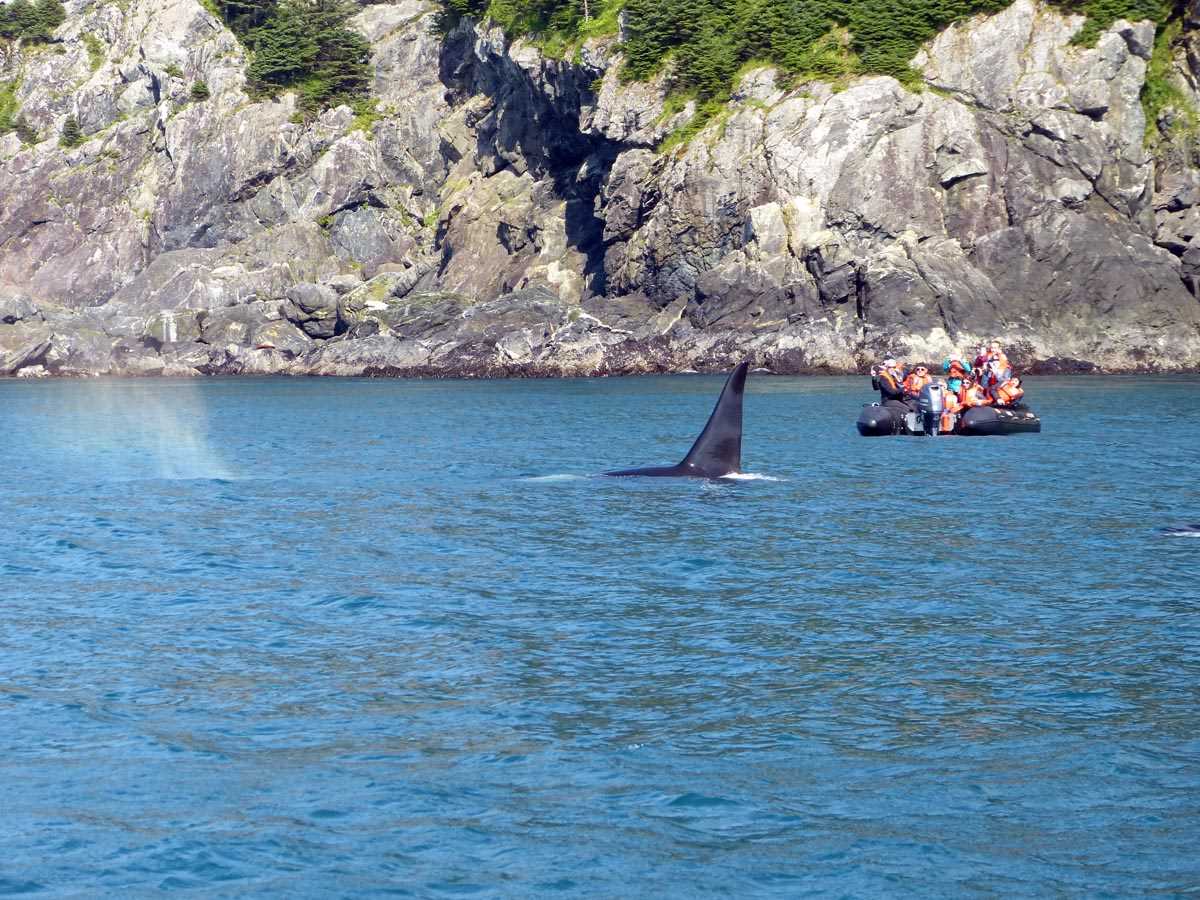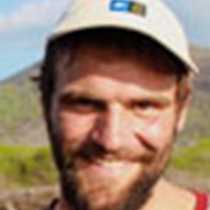Some days it all seems to fall together. Today was such a day. During the night, the National Geographic Sea Lion made its way up Chatham Strait and turned into Icy Strait, where the protected water of the Inside Passage meets the open water of the Pacific Ocean. Rafts of sea otters were floating on their backs, with their feet pointing upward, as we approached our morning destination of Port Althorp, and indentation on the northern coast of Chichagof Island. The yellow boats came down, and many of us opted to explore the bay by kayak. An encounter with a humpback whale was the high point, although the chance to paddle gently and absorb the serenity of the moment was reward enough. The kayaking was combined with strolls over the expansive tidal flat and grass/sedge meadow. We soon found that we were not the only legged creatures who recently strolled. We found an abundance of tracks of Sitka black-tailed deer, then several piles of fresh bear droppings, and then the tracks of the source of the droppings. All of this sign dated from the last falling tide, only hours ago, so the deer and bear must have been close to us, in the forest just beyond. Those who took the longer bush-whacking hike entered the forest and encountered bear sign of a very different sort. Bears follow traditional trails. In certain places, generations of passing bears have each placed their feet in exactly the same spots, wear away the underlying moss and herbaceous plants. We call these perennial bear trails, and they are sign that we are in the land where the great coastal brown bear reigns.
For our afternoon, we moved a short distance to the Inian Islands, where Icy Strait meets Cross Sound and the Pacific Ocean. We have been seeing evidence of the huge tidal range of the water of Southeast Alaska. The sea may rise as much as twenty-five feet from low to high tide. All of that water must stream in from the Pacific on a rising tide, and pass out on a falling tide. The biggest area of tidal flow is right here, past the Inian Island, coming and going as the tide alternates between flood and ebb, twice each day. On an incoming tide, salmon enter as well to breed in the streams and rivers of Southeast Alaska. The tidal flow also brings nutrients from the bottom water to the surface. These factors, together, make this an extremely productive area for marine organisms: phytoplankton through zooplankton and fish to marine mammals and bald eagles. That is what we came to see and experience. Our expedition landing craft were our vehicles of exploration. We enjoyed close-up views of sea otters, some of the females floating with their young on their belly, others using the belly as a tray on which to dismember their prey. Continuing on, we saw, heard, and smelled groups of Steller's (aka northern) sea lions hauled out on rocky points. These are the largest of the sea lions. This is a "haul-out" area of non-breeding animals, young males who are not yet big enough to compete at a breeding colony, and old males whose breeding is in the past. On an incoming tide, the sea lions enter the roiling tidal water to feast on salmon and other marine delicacies. Guests on the first of our two tours had a close-up meeting with a humpback whale trapping its prey against the rocky shore. The second round had an unexpected encounter with a group of the fish-eating ("resident") killer whales. There was one male with an immense, vertical dorsal fin and a number of females and young males with shorter, more curved fins. They seemed almost curious, and approached us before moving on into the water of Icy Strait. On top of these exciting wildlife encounters, Mount Fairweather stood out in all of its scenic grandeur across Icy Strait, in Glacier Bay National Park, our destination for tomorrow's adventures, whatever they might be.








